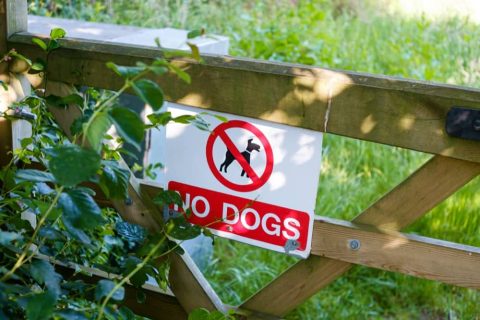No one likes seeing their pup in pain—especially when it happens suddenly, like after a bee or wasp sting. One moment your dog is sniffing around in the yard, and the next, she’s yelping and licking at her paw or face. If this is your first time dealing with a sting, it’s normal to feel unsure of what to do next.
Fortunately, most insect stings are manageable at home, and your dog can make a full recovery with a bit of care. Here’s a simple guide to help you act fast and safely when your dog gets stung.
Contents
Remove the Stinger (If Present)
Your first step is to check whether a stinger is still lodged in your dog’s skin. This usually happens with bee stings (not wasps), and the stinger can continue to release venom for several minutes if not removed.
Use a clean pair of tweezers or the edge of a credit card to scrape the stinger out. Try to avoid squeezing it, as this may push more venom into the site. If your dog is fidgety or upset, enlist help to gently hold her still. Be patient and calm to avoid stressing her further.
Once the stinger is out, wash the area with mild soap and cool water to remove surface toxins.
Apply a Soothing Baking Soda Paste
A tried-and-true home remedy for insect stings is a paste made of baking soda and water. It helps neutralize the venom and eases irritation.
To make it:
- Mix one tablespoon of baking soda with just enough water to form a thick paste.
- Gently spread the paste over the sting site.
- Try to keep your dog from licking it off too quickly—a few minutes of contact is ideal.
You can reapply the paste every few hours if needed, especially if the swelling persists.
Use a Cold Compress
Swelling and discomfort can continue for hours after a sting. Using a cold compress helps reduce inflammation and numbs the area slightly, making your dog more comfortable.
Here’s how:
- Wrap an ice pack or a bag of frozen vegetables in a towel.
- Gently press it against the sting for 5–10 minutes.
- Repeat every couple of hours as needed, making sure not to leave ice on the skin directly to avoid frostbite.
Your dog may not love this step, so consider giving treats or gentle scratches to keep her calm while you apply the compress.
Ask About Antihistamines
Sometimes, dogs can experience more serious allergic reactions, especially if they’ve been stung multiple times or have a sensitivity to insect venom. In such cases, an antihistamine like diphenhydramine (commonly known as Benadryl) may be recommended.
Important:
- Do not give your dog human medication without guidance from your veterinarian.
- Dosage depends on your dog’s weight and medical history.
- Side effects may include drowsiness or mild disorientation.
Contact your vet by phone before administering anything. They may give you the proper dosage or suggest bringing your dog in for evaluation.

Keep Her Hydrated
Even a mild reaction to a sting can make your dog feel under the weather. Make sure she has access to plenty of clean, fresh water. Hydration helps her system process and eliminate the toxins faster.
If she’s not interested in drinking, offer her a few ice cubes to lick. Many dogs enjoy crunching ice, and it can help keep fluids up while also offering a cooling effect.
Avoid forcing her to drink, but make sure her water bowl is nearby and easy to access while she rests.
Observe for Allergic Reactions
Most dogs recover from a single sting without complication. However, some dogs may have allergic reactions that escalate quickly—and these can be life-threatening if not treated promptly.
Watch for signs such as:
- Swelling of the muzzle, lips, or around the eyes
- Trouble breathing or wheezing
- Excessive drooling or vomiting
- Pale gums or weakness
- Collapse or loss of consciousness
These are red flags that indicate an anaphylactic response, which requires emergency care. If you notice any of these symptoms, don’t wait—take your dog to an emergency vet clinic right away.
When to See a Vet Immediately
In addition to allergic reactions, other situations that warrant professional help include:
- Your dog was stung multiple times
- The sting occurred inside the mouth or throat
- The swelling is spreading rapidly
- Your dog has a history of allergic reactions
- She’s showing signs of significant pain or distress
Even if you’re unsure, it’s better to err on the side of caution. A quick check-up can bring peace of mind and prevent complications.
Prevention Tips: How to Avoid Future Stings
While you can’t control every bee in your yard, you can take some steps to reduce the risk:
- Avoid walking your dog near flowering plants during peak pollination seasons.
- Keep trash cans sealed to deter wasps.
- Supervise your dog when she’s exploring new areas, especially parks or trails with dense brush.
- Consider using pet-safe insect repellents when appropriate.
If your dog has a known allergy, your vet might recommend carrying an epinephrine auto-injector specifically for pets—just in case.
Final Thoughts
A bee or wasp sting might be scary in the moment, but with calm action and a little care, your dog will likely bounce back quickly. Knowing what steps to take can make a big difference in how your pup recovers—and whether you need to make that emergency vet trip.
Keep a basic dog first aid kit on hand, know your vet’s emergency contact info, and always trust your instincts. Your furry friend counts on you, and you’ve got this!






